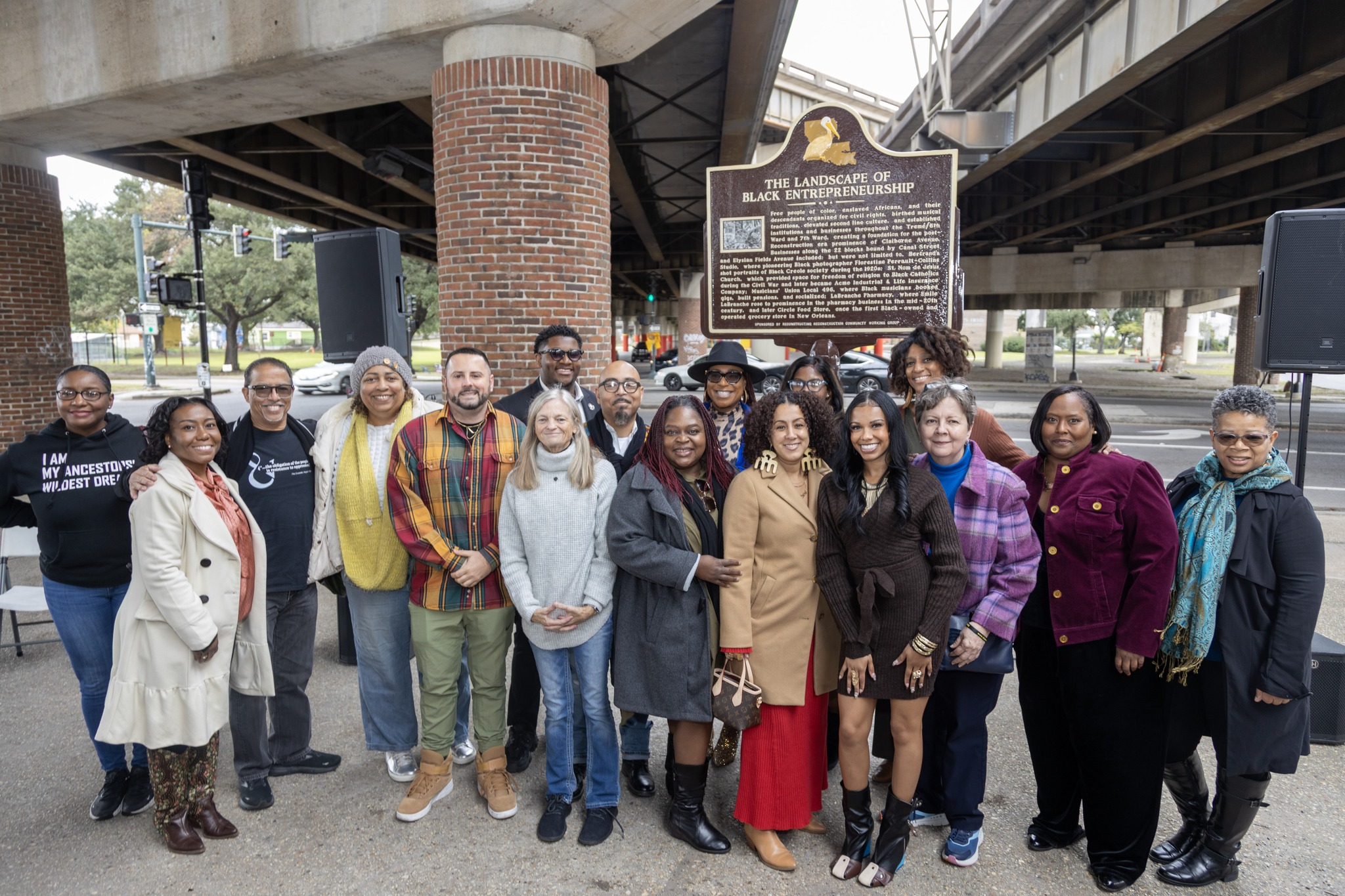Reconstructing Reconstruction: How New Orleans Residents Are Restoring Community Memory Together
Who gets to shape the story of a place? How do we better honor the many people and events that are part of our common history? What do we want to remember, and why?
In New Orleans, the Plessy & Ferguson Initiative (PFI) asked those questions not just to look back, but to build a shared, community-driven record of history that reflects everyone who has shaped the city. Their goal was to make public memory something that belongs to the people, not just institutions or historians. Co-founders Keith Plessy and Phoebe Ferguson are descendants of Homer Plessy and Judge John H. Ferguson. Their ancestors stood on opposite sides of the 1896 Plessy v. Ferguson Supreme Court case, which upheld racial segregation under the “separate but equal” doctrine. Today, Keith and Phoebe have come together to transform that painful legacy into one of reconciliation and understanding. Through educational programs and citywide projects that highlight sites of Black history, PFI works to create a fuller, more inclusive history of New Orleans—one that reconnects communities once divided by law and custom.
As part of that mission, PFI invited Common Ground USA to collaborate on a project focused on helping residents decide which stories and places deserve to be remembered. Together, they supported residents in taking a bigger role in shaping public memory and public space.

A Broader Tapestry of Belonging
Over two years, PFI and Common Ground USA brought together a coalition of 13 local organizations to decide on the story they wanted to tell about their community. Participants came from across New Orleans’ spectrum of beliefs and backgrounds—educators, faith leaders, historians, and neighborhood advocates.
The process wasn’t just about remembering the past. It was also about repairing relationships and building social trust for the present and future. Participants described meeting people they had never crossed paths with before: organizers, artists, and civic leaders from different parts of the city who shared a commitment to preserving local history. These relationships turned into active collaborations that continued beyond the grant period.
This work also aimed to expand people’s sense of agency. Through hands-on training and mentoring, the team walked local leaders through steps like researching historic sites, writing marker text, and working with the state’s approval board. This transparency helped shift civic power toward residents who had long been excluded from formal decision-making.
Honoring New Orleans' “Black Main Street”
One centerpiece of the project was a new historical marker honoring the once-vibrant Black business corridor along North Claiborne Avenue, destroyed in the 1960s by the construction of the I-10 overpass. Hundreds of homes and small businesses were bulldozed, and nearly 200 oak trees that had lined the avenue were cut down. A thriving hub of Black-owned stores, music venues, and community life was erased.
The Claiborne marker was the result of a group vote among community members in the project cohort, who wanted to highlight a place that symbolized both loss and resilience. They partnered with a local economic development group Ujamaa, which is also working to revitalize the area. The unveiling became a joint celebration of remembrance and renewal, drawing hundreds of residents, elected officials, and families from across the city.
The historic plaque was installed on Dec. 7, 2024, and feted with the most New Orleanian of traditions: a second line parade. Soon after, neighbors began using the phrase “meet me at the marker” for community events like Christmas caroling and cultural celebrations. What began as a signpost of history quickly became a living part of it.
Community Ownership, Lasting Outcomes
The initiative sparked durable bonds among participants, who continued to collaborate outside formal meetings. An interested few received mini-grants to extend their work into new, community-led projects. These included projects like designing a mural series to honor overlooked neighborhood histories, hosting “healing through art” circles, and developing plans for additional markers and storytelling sites across the city.
At its heart, Reconstructing Reconstruction shows how pluralism is rooted in place. In a city steeped in legacy and sustained by activism, this project opened space for voices to emerge, tell their stories, and define its future.
“There’s a lot of good energy right now for pluralism. There’s also apprehensiveness in place and parts of the country, which is natural and normal to see happening. With collective memory, we’ve found that people do have a hunger and desire to tell their own story, to be in control of their own narrative. There’s a lot of space for pluralism in that. People come from different backgrounds, from different understandings of the history of a place, but they have a shared passion and understanding of how important their community is. They have things that they want to remember – and importantly, things that they don’t want to be lost.”
– Faitth Brooks, Common Ground USA